With the theme “to know the Strength to Protect,” the 12th installment of the Tales studio was recently ported to the PS3 with the new name Tales of Graces f. Many changes were made to the original Wii version, but the part that remains unchanged was the main storyline.
Graces has a world that is similar to its antecedents, where people relies in some mystic energy source called Arles and Cryas to support the three competing kingdoms: Windol, Strata, and Fendel, which resembles the German Empire, USA, and USSR respectively, intentionally or not.
At an age of 11, the son of a Windolic feudal lord Asbel Lhant met and vowed to protect an amnestic girl he named Sophie. He broke the vow when Sophie died protecting him and two other children, which gave him the drive to become a knight to gain the strength to protect others.
The main story begins 7 years later, where he encounters a girl identical to Sophie in terms of appearance after a catastrophic event in his homeland.
Lets take a look at the HOTs and NOTs of Tales of Graces f.
HOT
Better Storyline
The good thing about the story comes in the PS3 exclusive after-story, which occurs six months after the main plot. It focuses on how the characters choose to live their lives after the experiences they’ve had. This storyline is better written than the main plot and makes players feel hopeful and optimistic. This arc is also when Richard, an early main character and one of the major bosses in the main story, rejoins the party, bringing the number of playable characters up to seven.
Improved Battle System
Aside from the story, Graces features a new battle system called the Style-Shift Linear Motion Battle System (SS-LMBS). Players can switch the characters’ fighting styles between the predetermined A-style and changeable B-style. (For instance, Asbel’s brother Hubert uses melee dual wield swords in his A-style and ranged dual wield guns in his B-style.) While the anteceding Tales battle system only attaches four moves to command keys, SS-LMBS providing 13 extra preset skills on top of the four moves and makes battles more dynamic. Implementing also the CC system from Destiny and the free-run system from Abyss, Graces makes battling monsters a lot more fun and exhilarating than the old games which gets old quick. The only flaw in battle encounters occurs when the multiplayer mode is used. Although the multiplayer mode decreases linearity in battles even further, it zooms out the battle screen to let everyone see their respective characters, which makes it difficult to pay attention to the details on the battlefield.
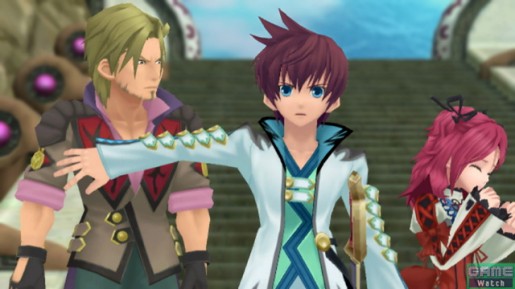
Combine System
Two more new systems in Graces are Combine System which combines two items into a superior one, and Energy Gauge, which can be used to clone raw materials, consume items automatically in battles, etc. Combine System itself is a good system as it gives challenges in completing the collector’s book, but at the same time, the list of items to combine gets ungodly long when it approaches end game, and finding the items you need become annoying and troublesome. On the other hand, while the Energy Gauge can aid the players in many ways, especially by using the grimoires, raising its power takes an excessive amount of effort, which defeats its purpose when its powers are not raised enough to use the end game abilities.
Improved Presentation, Cast & Soundtrack
To present all these features in the ported version, Graces f re-renders all graphics and scenarios into HD resolution, which brings a striking clean view to the table. As a whole, the designs of the game have a beautiful, soothing style, and can be characterized as aesthetic. The hi-ougis’ scenes are especially well designed and alluring. However, there are some minor flaws in the 3D designs. For instance, characters appear to be quickly shaking up and down as they walk across surfaces with dented patterns.
Another ground of presentation is the soundtrack, in which its quality varies greatly. On one hand, the BGM in some dungeons are so dull and simple they could barely even be called music. However, BGM from other dungeons and the scenario soundtracks intrigue players in the atmosphere and brings them into the environment. The game’s theme song sang by BoA, and its orchestrated version used in the credit roll is perhaps the best pieces in the history of Tales of series.
The heavy cast of Graces also plays a big role in making this game what it is. Kana Hanazawa’s performance is particularly outstanding and she has to imitate the voice and tone of all 6 other characters as Sophie’s B-skill set is mimicking others’. The voice actors literally gave life to the game with their outstanding performance.
NOT
Bad Plot Themes
The plot yells “mainstream” at the first glance, as it is an amalgamation of the usual anime/manga themes such as friendship, the ties between people, and the meaning of life. While these themes are overused in the past, it does stimulate excitement when these old cliché are all brought back to the table after a long time, even though it makes the story predictable.
The biggest flaw of the plot is the hard selling of the theme of “protect.” While The RPG to Know the Strength to Protect is an attractive characteristic genre name, the game fails to provide the reason to protect. Without giving excessive spoilers, people don’t just vow to protect someone they just met, however vulnerable she is. For many times, it begs the question as to whether the protagonist is just philanthropic or being hypocritical. This makes him too idealistic and loses his humanity. These hard selling appear multiple times in the game which makes the story somewhat irrational and unrealistic.
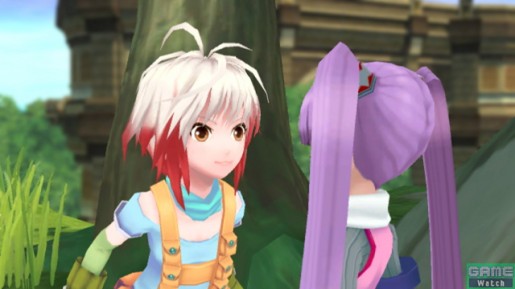
Map Exploration/Camera Angles
On top of the battle system, another noteworthy point in terms of gameplay is the map exploration. Instead of the resembling a traditional world map, the fields in Graces connects locales with detailed location geometry like Hearts did. While that makes the worldview more realistic and beautiful, there are certain things that Graces did not pertain from Hearts’s exploration system: The fact that players can no longer adjust camera angles and fly across the field in their flying vehicle end game is rather disappointing and irritable.
Not Enough Non-DLC Wardrobe
As a PS3 Tales game, Graces comes with many DLCs. The quality of the DLCs is high, including the .hack// costume sets, Code Geass costume sets (where Asbel is dressed as Kururugi Suzaku, when they are both voiced by Takahiro Sakurai, ha), and the like. However, it seems that the game is putting too much focus on DLC in terms of the fun contents like costumes and attachments.
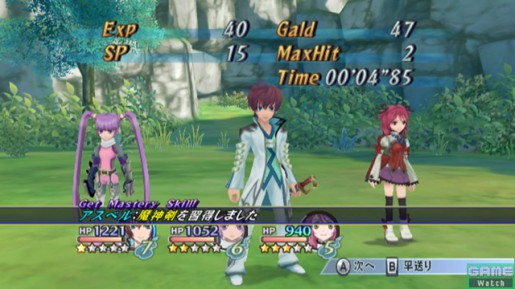
Idolm@ster costumes
The Costumes and attachments have always been big parts of Tales games. Dressing up the characters makes the game more interesting and fun to play with. However, comparing to Vesperia, the only other PS3 Tales game until the release of Xillia next year, the number of costumes that can be obtained in-game is very limited. The “free” wardrobe is simply not big enough for players to fully enjoy interactions with their characters. Thus it becomes another huge disappointment.
VERDICT
Tales of Graces f is in fact a good Tales game. For the most part it is a good port to the PS3, however, it is still inferior to the port of Vesperia, which features Patty Fleur, an entirely new character who significantly relates to the Tales series, and a modified storyline built just for her. The new character who appears in the after-story, while relates to the earlier parts of the story greatly, is nowhere close to the status of Patty Fleur. As a whole, Graces f is a good game with an okay story. Although it has excellent presentations, the minor flaws overwhelm the good characteristics. It would be nice for Bandai Namco to release a patch to fix these flaws, but seeing their financial status, it is highly unlikely to happen.
[Editor’s Note: Tales of Graces f was reviewed using the Japanese version for the PlayStation 3]
Writen by Ken Takanashi & Edited by Namoxsoul

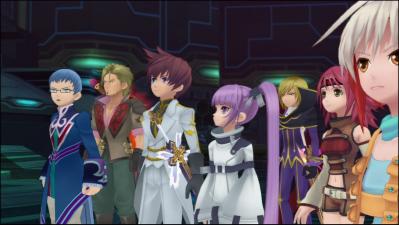
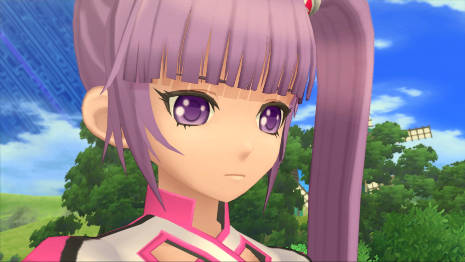
Tales of JP
January 10, 2011 at 1:46 PMNOT:
Namco Bandai is selfish…
zpoc
January 10, 2011 at 2:40 PMthe author of this review needs to look up what the word ‘aesthetic’ means…
Desfunk
January 10, 2011 at 7:03 PMHere’s hoping we get a US release for this. I’m just itching for a new tales game! Sucks that we were shafted out of the ps3 port of Vesperia (and yes, i already own it on 360)
Grant Gaines (大将)
January 10, 2011 at 9:48 PM@ Desfunk
The ps3 version of Vesperia was quite fun, and it was a great disapointment the US never got it. I really hope fans get some support here soon as its getting rather sad…
Patrick Henry
March 15, 2012 at 8:29 PMThere are culture differences, but you cannot count that as a bad selling point of the game. I don’t see anyone criticizing MW3 or BF3 stories, which the japanese may or probably percieve as stupid. It does not seem strange for me for a child to something impulsive and stupid like swearing to protect something, the opposite, I appreciate a story that realizes he is a kid, a lot of western stories try to make children seem like miniature adults (you see it all over the place in live action tv, 6 criticizes father for his morals, father acually listens, realism flies out the window. I would expect a kid to criticize me for being fat and not listen to a word I say, which my younger cousins do.) His desire to protect is driven by sudden traumatic events brought on by a world he cannot seem to comprehend at that age. His brother was basically traded and he thought he was responsible for killing someone. When I was a kid, I accidentally killed a frog and puked and cried my eyes out. Now that I am older, I hardly cry at funerals. This is the type of realistic character development that everyone seems to think is unrealistic, thanks in part to, you guessed it, miniature adults in writing. The fact that they were able to change their perspective to write from a child’s view is better than lot of authors who routinely forget their characters are supposed to be kids.
Grant Gaines (大将)
March 15, 2012 at 9:28 PM@ Patrick Henry
The person who gave me the review was born in Hong Kong and from that mindset. This might be different than the average reader of the site, though that doesn’t matter. However, I would like to remind you that not everything said in a review affects the score. Just yesterday I wrote a review of WARP where I mentioned gore/story. I felt both of these elements needed to be mentioned, though they had no affect on the actual score.